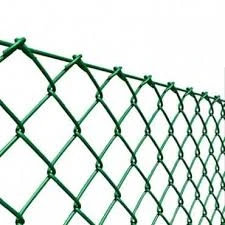The Importance of Silt Fences in Environmental Conservation
In the realm of environmental conservation, one often-overshadowed hero emerges quietly yet effectively the silt fence. These unassuming barriers play a pivotal role in soil erosion control and water quality protection, especially in construction sites and areas undergoing land disturbance. With the growing need for sustainable practices, the utility of silt fences has gained relevance, not only in terms of regulatory compliance but also in fostering a greener future.
Understanding Silt Fences
A silt fence is a temporary sediment control device that consists of a geotextile fabric strung between wooden or metal posts. It is specifically designed to intercept sediment-laden runoff, allowing water to pass through while trapping soil particles. This ingenious design helps mitigate the adverse effects of soil erosion, which can lead to significant environmental degradation. By preventing sediment from entering nearby bodies of water, silt fences help maintain the integrity of aquatic ecosystems.
The Mechanism of Action
The effectiveness of silt fences lies in their ability to filter water and capture sediment. When rainwater falls, it often dislodges particles from the soil, particularly during construction or land-clearing activities. Without appropriate measures in place, these particles can travel through drainage systems and eventually pollute streams, rivers, and lakes. Silt fences function by creating a barrier that slows down the flow of water, allowing sediment to settle before it can wash away.
The installation of a silt fence is relatively straightforward. The fabric is buried a few inches into the ground to prevent undercutting and is secured to posts that are firmly driven into the soil. This ensures that even during heavy rainfall, the fence remains stable and effective in trapping sediment. Regular maintenance is essential; the fence must be inspected and repaired as necessary to ensure optimal performance.
Environmental Benefits
silt fence green

The environmental advantages of using silt fences go beyond mere sediment control. When sediment enters waterways, it can carry with it pollutants such as nutrients, chemicals, and heavy metals. These pollutants can lead to nutrient overloading, harmful algal blooms, and the degradation of water quality. By intercepting these sediments, silt fences not only protect aquatic life but also contribute to healthier ecosystems overall.
Moreover, protecting topsoil is crucial for maintaining biodiversity. Healthy soils are vital for plant growth, and they support a diverse array of organisms. By minimizing soil loss, silt fences help sustain the natural habitats that countless species rely on for survival. This commitment to preserving biodiversity is an essential aspect of the broader initiative towards a greener planet.
Economic Considerations
While the environmental benefits of silt fences are clear, their economic impact is equally significant. Erosion control measures can save contractors and developers money in the long run by preventing costly clean-up efforts and potential legal liabilities associated with water pollution. Furthermore, maintaining soil health leads to better land productivity, thereby positively influencing agricultural output.
Investing in proper erosion control practices, including the use of silt fences, can also enhance a company's reputation. In today's eco-conscious market, demonstrating a commitment to environmental stewardship can attract customers and clients who prioritize sustainability.
Conclusion
As communities and industries strive towards sustainable development, the role of silt fences in protecting our environment cannot be overlooked. These simple yet effective barriers play an essential part in reducing soil erosion, safeguarding water quality, and promoting biodiversity. Adopting best practices in sediment control will ensure that we are not only compliant with environmental regulations but also contributing to a healthier planet for future generations.
In summary, silt fences exemplify the synergy between functional design and environmental responsibility. As we face the challenges of climate change and environmental degradation, embracing tools like silt fences is a step toward a more sustainable and green future. Every effort counts, and through the use of these protective barriers, we can collectively pave the way for a cleaner, healthier world.
















